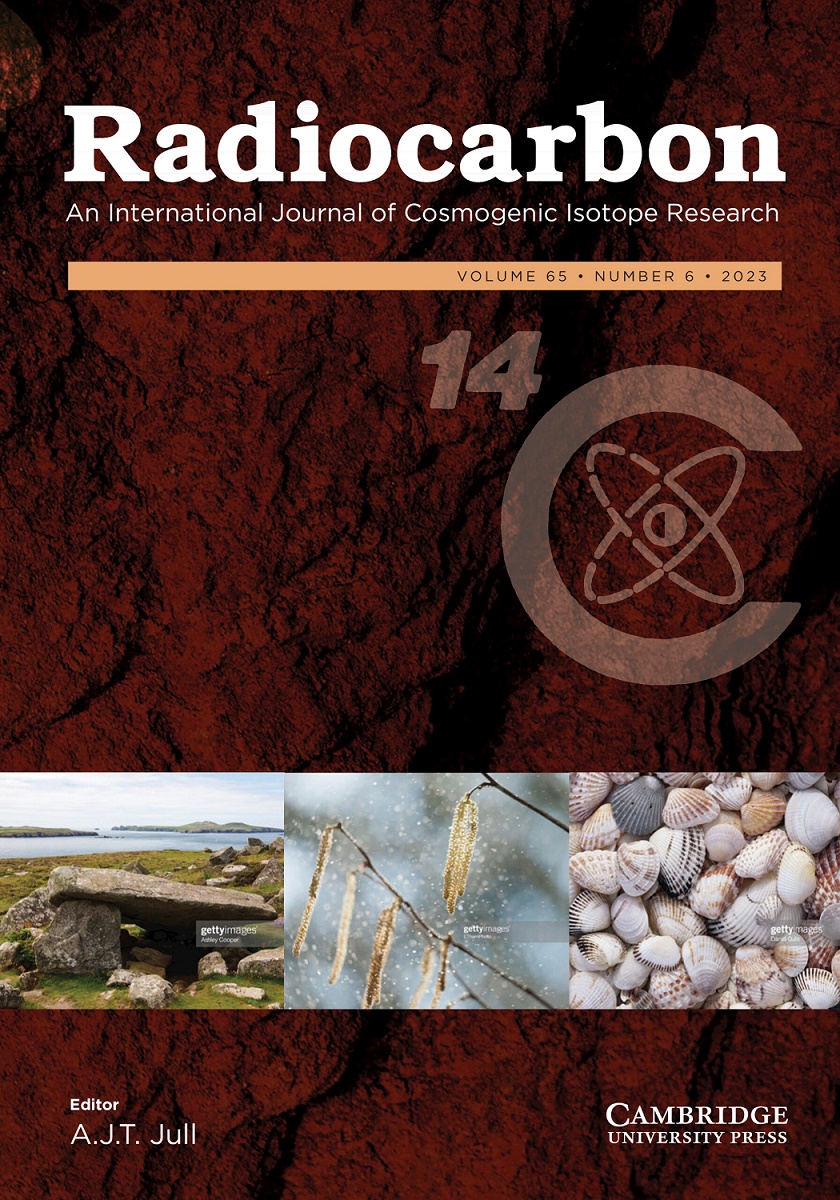The timing and mode of southern Andean human migrations
IF 1.3
3区 地球科学
Q2 GEOCHEMISTRY & GEOPHYSICS
引用次数: 0
Abstract
While recent genomic and isotopic information show that migration has been pervasive along human history, southern Andean archaeology has largely overlooked its importance in shaping human trajectories of sociocultural change. Building on previous isotopic research that identified the presence of migrant farmers in the Uspallata Valley (Mendoza, Argentina), we present chronological and bioarchaeological results that help to characterize the timing and mode of human migrations in the southern Andes. The burials with migrants show the representation of the different age classes, including a high abundance of children, as well as both men and women, suggesting that family groups were likely involved. The Bayesian modeling of 16 direct dates for migrants indicates that these migrations started between 1210–1275 CE (median 1255 CE) and finished at 1320–1425 CE (median 1360 CE), indicating that there is nearly no overlap between the commencement of this migration phase and the southwards expansion of the Inka Empire. The model defines a diachronic process that lasted between 55 and 195 years, implying that migration to Uspallata was a multi-generational process that involved between two and eight generations (median of four generations). Our contextual, bioarchaeological and chronological evidence indicates that the conditions fostering migration to Uspallata were sustained through time, inviting to explore persisting push-pull dynamics acting during this period.安第斯南部人类迁徙的时间和方式
最近的基因组学和同位素信息表明,迁徙在人类历史上无处不在,而安第斯南部的考古学却在很大程度上忽视了迁徙在塑造人类社会文化变迁轨迹方面的重要性。之前的同位素研究发现了乌斯帕拉塔山谷(阿根廷门多萨)存在迁徙农民,在此基础上,我们介绍了年代学和生物考古学的研究成果,这些成果有助于确定安第斯山脉南部人类迁徙的时间和方式。有迁徙者的墓葬显示了不同年龄阶层的代表性,包括大量的儿童以及男性和女性,这表明很可能有家庭群体参与其中。对 16 个迁徙者的直接日期进行贝叶斯建模表明,这些迁徙始于公元 1210-1275 年(中位数为公元 1255 年),结束于公元 1320-1425 年(中位数为公元 1360 年),这表明这一迁徙阶段的开始与因卡帝国的南扩几乎没有重叠。该模型定义了一个持续 55 到 195 年的非同步过程,这意味着向乌斯巴拉塔的迁移是一个涉及 2 到 8 代人(中位数为 4 代人)的多代过程。我们的背景、生物考古学和年代学证据表明,促进向乌斯帕拉塔迁移的条件是长期持续的,这就需要探索这一时期持续存在的推拉动力。87Sr/86Sr 结果表明,迁移发生在这些群体的日常领地上,可能涉及跨越社会或种族边界的迁移。
本文章由计算机程序翻译,如有差异,请以英文原文为准。
求助全文
约1分钟内获得全文
求助全文
来源期刊

Radiocarbon
地学-地球化学与地球物理
CiteScore
16.20
自引率
6.00%
发文量
85
审稿时长
6-12 weeks
期刊介绍:
Radiocarbon serves as the leading international journal for technical and interpretive articles, date lists, and advancements in 14C and other radioisotopes relevant to archaeological, geophysical, oceanographic, and related dating methods. Established in 1959, it has published numerous seminal works and hosts the triennial International Radiocarbon Conference proceedings. The journal also features occasional special issues. Submissions encompass regular articles such as research reports, technical descriptions, and date lists, along with comments, letters to the editor, book reviews, and laboratory lists.
 求助内容:
求助内容: 应助结果提醒方式:
应助结果提醒方式:


